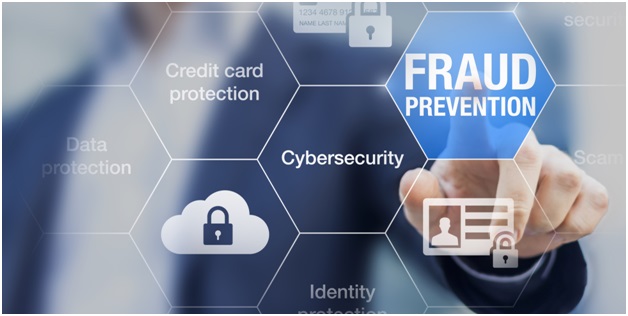Identity theft may occur both in the real world and the virtual world. In both of these cases, it is a fact that identity theft can ruin lives by having a domino effect in many ways. In the case of the digital world, there is perhaps even more opportunity for cybercriminals and the online crook milieu in the form of quick profits to be had. These types of crimes can come in various forms and can spread onto multiple platforms, known as attack vectors and attack surfaces in IT lingo, respectively. What is important is that you know how online identity theft operates, and what you can do to effectively defend against it as much as possible.
As far as the statistics go, the year 2022 has been staggering in online identity theft cases. As the internet’s user base grows, naturally there is more opportunity for crooks to harvest information about us and then use that to their benefit. The online realm is especially favorable to thieves and scammers because they can hide and cover their tracks much more successfully than they would be able to in real life.
According to the Federal Trade Commission, the most common complaints in 2021 were identity theft, the most prevalent in this niche being government documents or/and benefits fraud. About 400,000 people reported a case of identity theft like this in the USA alone. On a global scale, this figure is in the hundreds of millions. Particularly as we haven’t gotten out of the pandemic yet, and millions continue to work or study from home, online identity theft becomes easier and more favorable for cybercrooks. New forms of online identity theft are constantly being crafted by clever cybercriminals to evade the latest detection techniques as well as keep victims oblivious to the matter.
Meanwhile, in 2022, large corporations and high-value targets continue to have their documents and data stolen and forged either for sale or impersonation of some sort. Moreover, stealing people’s medical or financial information is a goldmine for crooks. For instance, Medicare and Medicaid identity scams are on the rise. With that, so are scams and fraudulent schemes involving stolen driver’s licenses and insurance data.
Continuing, with the current extreme popularity of social media, identity theft has spilled over into the social media realm and is also causing havoc there resulting in account takeovers (ATOs) and consequent scams. Instagram scams this year have resulted in people’s accounts being taken over and their followers being tricked, for example. With around 15 million victims each year in the USA alone, and resulting losses of billions of dollars, online identity theft continues to be a colossal problem everywhere. Children, heavy social media users, wealthy people, and the oblivious elderly are the most common targets of online identity theft.
On another note, sometimes identity theft can be thrust upon you not just by external actors like cyber crooks and hackers, but by your friends and even family, according to some studies.
What is Online Identity Theft?
There are several forms of online identity theft, such as;
- Financial
- Medical
- Personal information (PII) related
- Inheritance or estate
- Insurance
- Employment
- Tax
- Child identity
- Social media
The more information there is about an individual online, the more ways there are to get access to an account or simply harvest account information and sell it on cybercriminal dark web forums, which the blackhat hacker community tends to prefer. Crooks even find ways to conduct synthetic identity theft which means combining real information about a user with made-up information to create an account or impersonate someone.
How to Prevent Online Identity Theft
Preventing online identity theft requires a bit of care and attention from everyone. This means being as pedantic as possible about things like bank statements and other transactions. First and foremost, remember that over 90% of identity theft cases occur due to human error where a user’s account was hacked due to a simple password or due to a phishing email that tricked the user into entering their credentials into a fraudulent form on a malicious website. In other cases, criminals can physically rummage through someone’s garbage to try and piece together information, spy on people’s devices over their shoulder in public, or even physically steal mail envelopes belonging to someone.
In other more likely cases of successful online identity crime, your internet traffic could be intercepted in Man in the Middle (MiTM) intercept attacks that compromise your router and home network. Furthermore, the use of public WiFi to conduct sensitive transfers and logins may result in you being monitored and exploited by cyber crooks.
To conclude, to avoid a large portion of these issues it is key to keep the following in mind;
- Secure all online accounts with very long, randomized passwords. Do not repeat these passwords across multiple accounts. Store these passwords only on paper and do not forget them
- Never share personal information or credentials with anyone, especially over social media platforms such as Facebook or Instagram
- Always check the sender address of an email, you may find a type or suspicious domain that indicates it is a well-crafted scam email trying to scam you
- Protect yourself from network interception by; using a premium VPN (Virtual Private Network) 24/7 and employ a very powerful password on your home WiFi router as well
If you notice strange purchases on your bank statement, receive suspicious emails, receive suspicious notifications, or find that your online services are disrupted somehow, you should immediately check when you were last logged into your accounts and then switch up your passwords. Furthermore, if you are certain there was theft involved, you should report the theft to the FTC’s identity theft website or your local identity theft service. If you have been a victim of theft involving your bank account, medical service, or insurance you should immediately reach out to your relative institution. You could also think about signing up for an identity theft prevention program.






